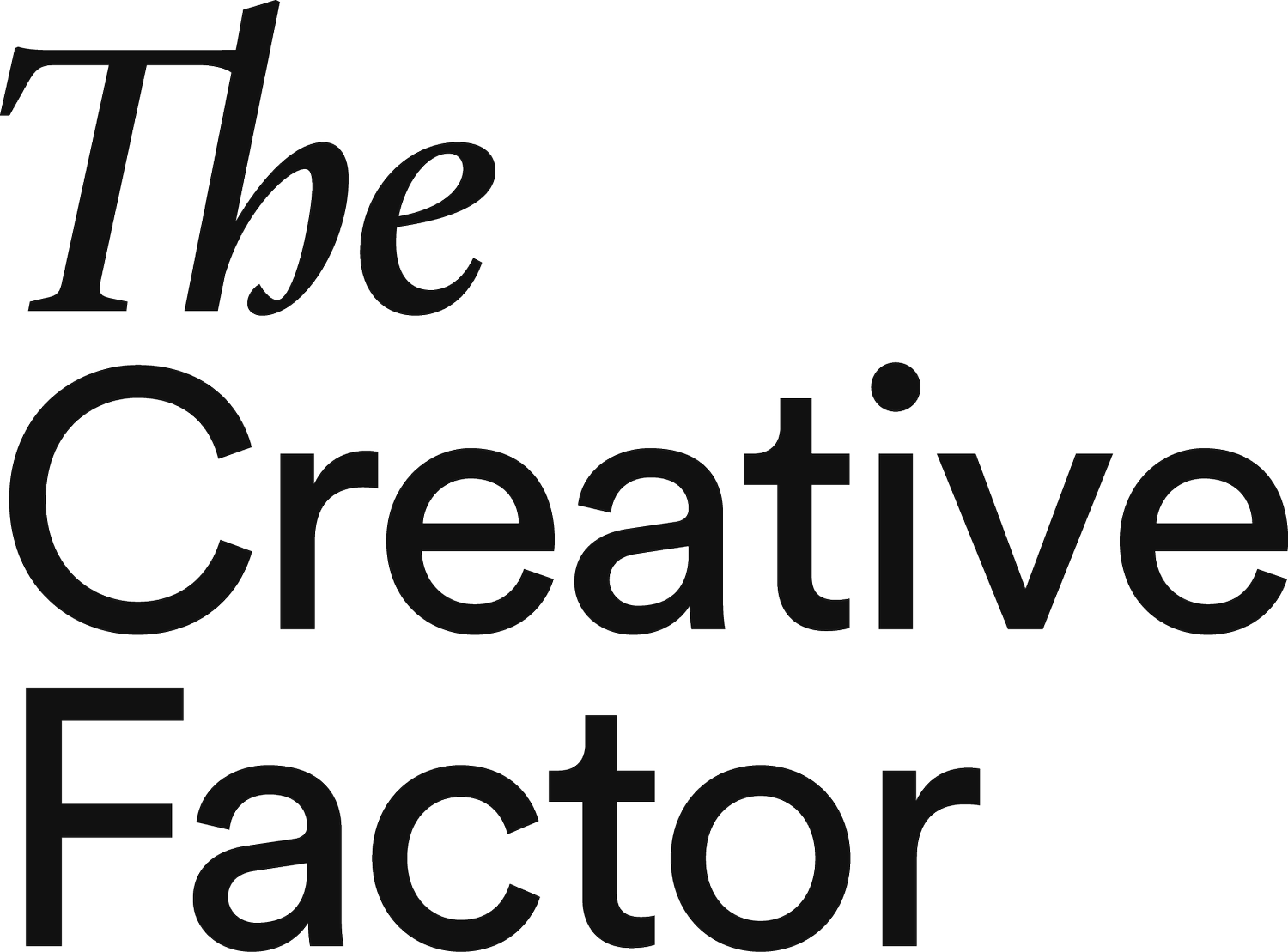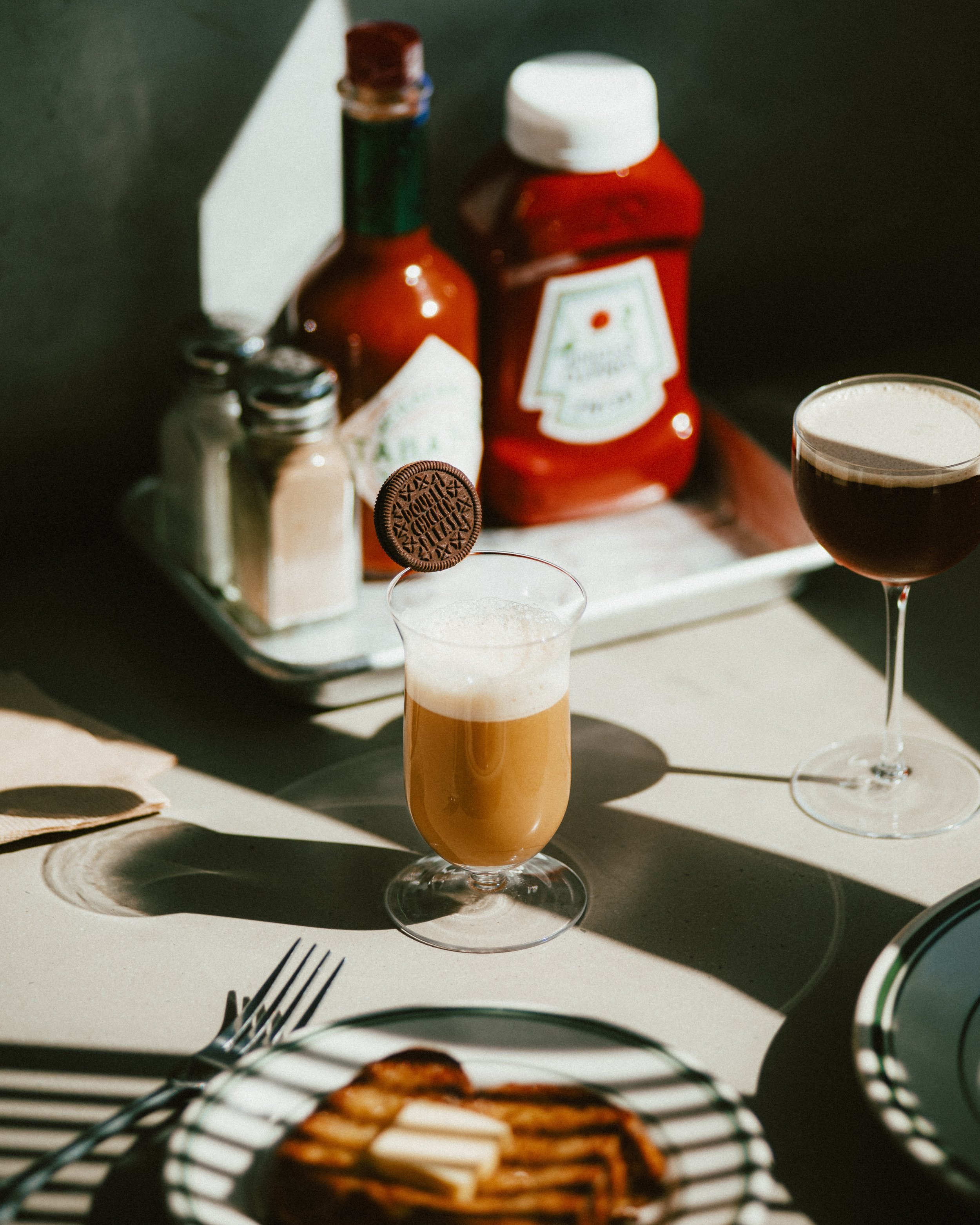Double Chicken Please: A Design Studio That Runs a World Class Bar
GN Chan and Faye Chen opened Double Chicken Please with the goal of making every cocktail its own design. Photos courtesy of Double Chicken Please.
GN Chan and Faye Chen have a relentless drive to try everything at least once, even if an entire deck of cards is stacked against them. When they couldn’t find a rental space in New York City to open a bar back in 2017, GN used his skateboard to build a bar top and turned his 1977 Volkswagen minibus into a mobile bar. That year with his team, he created and sold thousands of cocktails in dozens of American cities, each with their own unique design element. Then, at the height of the pandemic, they opened Double Chicken Please (DCP), a design studio and restaurant in New York that serves handmade cocktails with an unexpected fusion of ingredients. Their most popular drink is the Red Eye Gravy, made with Irish Whiskey, coffee butter, corn, walnut, wild mushroom, and microwaved coppa. It sounds like a bunch of things you should never, ever blend together. Yet New Yorkers and tourists from around the world line up for it every day.
Today, DCP is one of the most successful bars in the country (and ranked the number 2 bar in the world by Perrier® on its 50 Best list). It is a place where you can have your pizza and eat it, too — or key lime pie, french toast, and Japanese noodles; or thai curry, beet salad, and mango sticky rice; or ‘shroom ceviche, butter raisin biscuits, and custard buns…
Here, GN shares what it takes to run one of the most successful restaurants in the city, including what it was like to sell cocktails out of his van while sleeping on the street; how the team translates a food flavor into a liquid form; and why he sees his team members as future business partners.
How did Double Chicken Please start?
Minghan, Tsai (referred to as Turkie) and I studied industrial design in college together and we always came up with crazy ideas. We were supposed to open a design studio together post-grad. His nickname is Turkie, and my nickname in Mandarin is something like “chicken filet.” Hence, Double Chicken, Please. But that didn’t happen, because by chance, I got scammed. I became a bartender, moved from Taiwan to New York, and eventually we opened a bar and decided to bring the name back. Today, we see Double Chicken Please as a design studio where we heavily implement design elements in every aspect, whether it is from the concept, interior art and graphic, menu design, in-house merch development which are led by Turkie. I oversee the cocktail R&D while Faye is the general manager keeps the wheels turning and ensures everything runs smoothly as a team.
When GN couldn’t find a space to rent in New York, he turned his 1977 camper into a mobile bar and traveled the country selling his cocktails.
Where do you get your ideas for the menu and designs of the drinks?
We have two different concepts we call FREE RANGE and The Coop. They’re two different menus, two different vibes, even with different playlists. So for The Coop, we play with classic, nostalgic dishes — key lime pie, Japanese cold noodles, chicken sandwiches, beet salad — and turn them into a cocktail format. FREE RANGE is something even more experimental that we came up with in October. For these drinks, we think outside-the-box, not just with the cocktail or the glass but with the ambiance and the art that surrounds the drink. All of the drinks on this menu are centered around a cartoon from our childhoods that brings us nostalgia.
Every drink at DCP has a design element, like their house-made Oreo.
How do you perfect these cocktail recipes and translate a food flavor into a liquid form?
It’s a lot of R&D, and we make disgusting drinks way more than we make delicious drinks. As a team, we’ll try lots of different brands and different methods to make the flavors close to what we want. Once we figure the flavor out, we work with Turkie to finalize the look and how we present it — how we garnish it, how we make the glassware, everything. Because that’s a big part of the whole thing. If you look at our drinks, most of them are pretty minimal. The garnish is very simple because we believe in the glassware itself.
How do you execute your creative vision at a high level within the constraints of a fast-paced restaurant and bar environment?
Our view is that we grow with talent. Four years ago, when we opened, we were just five people. Now we are 38. In New York’s hospitality industry, it’s very rare to see people dedicate themselves to just one place — most of the people in hospitality jump around. But we only hire full-time because we see every team member as our future business partner. We try to not just redefine what a bar team can do, but also we want to offer people a career rather than a job.
Turkie is the right side of the brain at DCP. Here, he’s building a sculpture for the front bar.
Take me back to 2017 and tell me about the experience traveling around in your Volkswagen minibus: what did you set out to do and what was your vision?
Back then, I was working at a bar called Angel Share, a legendary Japanese speakeasy in the East Village. I loved it, but wanted to open something with Faye and Turkie. The problem is that it wasn’t very easy to find a place in New York. So we just decided to turn my car into a mobile bar. It was a 1977 VW camper, so it had a sink and other facilities like that. We decided to add some cosmetics, so I used my old skateboard to build a bar top. Then it was ready to be brought around to different cities, almost like a preview of Double Chicken Please. I think everybody has a little bit of a nomadic side to them, and this journey allowed us to wander around the country and do something we loved at the same time.
What worked and what didn’t?
We were sleeping on the street a lot, fixing the car and pushing it around when it stopped working, and always scrambling to get the right ingredients in time for our next pop-up event. It was a hustle, but we learned so much about people — like what kind of approach would make customers feel the most connected to the experience. And we brought those learnings back to our restaurant.
What was the biggest lesson?
That nothing beats nostalgia. A lot of what we do when we are making our drinks is play with memories and things that bring people nostalgia. When I was a freshman in college, my design professor picked up his iPhone on the first day and said, “Design is dead.” His point was that everything that went into the making of this device was so original, so groundbreaking, that nothing could beat it. Unless we did something entirely new.
So, ironically, we were trained to appreciate a lot of old stuff — old cars, old chairs, old designs. The kinds of things that were created through a very pure mindset, in the 1960s and 70s when there was less stimulation and people were able to create truly timeless stuff. There’s something magical about that.
Where do you see Double Chicken Please in the next 10 years?
Why do people come to the bar? That’s what I always ask myself. The bar used to be called the saloon in the 18th century, and it was a place where people could come and gather to talk about ideas and figure out how to execute them. We need the bar, and it needs to be very human. I think more and more, especially in our business — we all know the alcohol business is shrinking — we have to think extra hard about how we can continue thriving as a brand and design studio. We need to create value that isn’t just about the alcohol or the drinking, and it will have to incorporate AI in some way. In the near future we could probably make glassware from scratch behind the bar in 30 seconds. But without the human emotional experience, even that might not sell.






